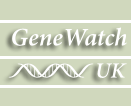Rising doubts about safety of genetically engineered plants
Bruxelles. In a
letter to Commissioner Dalli, Testbiotech and GeneWatch UK give new evidence of
EFSA's failure to perform risk assessment of genetically engineered plants. A
detailed analysis of original documents as filed by Monsanto for their
genetically engineered maize sold under brand of Genuity VT Triple PRO shows
that crucial documents do not meet the standards of so called Good Laboratory
Practice (GLP standards). As for example the company states in their
investigation of the combinatorial toxicity of insecticides produced in the
plants "there was no intention to conduct this study according to Good Laboratory
Practice (GLP) Standards." Nevertheless the data were accepted by the
European Food Safety Authority (EFSA) and the plants were accepted as being
safe.
"EU Regulations require that highest possible standards are applied during risk assessment. But EFSA accepted data for risk assessment of a questionable product that would have been rejected for any scientific publication", said Helen Wallace from GeneWatch UK. "In conclusion, current practice is not in line with legal requirements."
The detailed analysis
of the documents was conducted after the EU Commission rejected a formal
complaint of GeneWatch (UK) and Testbiotech against the market authorisation of
Monsanto's maize that is a combination of two genetically engineered plants
(MON89034XMON88017, nickname SynthiToxStax). The Commission is of the opinion
that risk assessment was conducted in accordance with EU regulations.
Now a tabled overview on the factual findings about SynthiToxStax,sent to the Commission today, shows the opposite. It is also shown that statements being made by EFSA's own experts give evidence that EFSA's current procedure of risk assessment is based on a flawed concept: The investigation of substantial equivalence is based on a comparison between the genetically engineered plants and their conventional counterparts. This comparison is regarded as the most crucial element in risk assessment as performed by EFSA. However as a quote from one of the leading members of EFSA's GMO panel, Joe Perry, shows this concept is flawed because EFSA is accepting a database set up by the International Life Science Institute (ILSI) for this purpose. In a public hearing in March 2011 Joe Perry stated that "at the present time we can't trust the ILSI database". But it was just this database from ILSI that was used by Monsanto to show safety of its SynthiToxStax. ILSI has strong ties with the biotech industry.
"While even statements
from EFSA's own experts show that current risk assessment is not reliable, the
Commission is still defending the opinions of the Food Safety Authority. So
which interests does the Commission really serve?" asked Christoph Then from
Testbiotech.
The genetically engineered maize is sold by Monsanto under brand Genuity VT Triple PRO Corn (event MON89034 x MON 88017). It produces a synthetic toxin, intended to kill insect pests. This maize was approved for usage in food and feed by the EU Commission on 17th of June 2011. It produces a combination of three different insecticidal toxins, one of which is synthesised artificially. Further, the plants are made tolerant to the herbicide glyphosate (known as Roundup).
Contact:
Helen Wallace, + 44 7903 311584, helen.wallace@genewatch.org
Christoph Then, + 49 151 54638040, info@testbiotech.org.,
Joint letter to EU Comssioner Dalli: http://www.testbiotech.de/node/616
Tabled overview on risk assessment of SynthiToxStax:http://www.testbiotech.de/node/615
Original complaint from Testbiotech and GeneWatch UK, July 2011: http://www.testbiotech.org/node/528
Answer from EU Commissioner Dalli, November 2011: http://www.testbiotech.de/node/617
Tabled overview of comments on new draft EU Regulation on implementing risk assessment of genetically engineered plants: http://www.testbiotech.org/node/614
